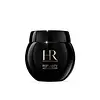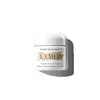What's inside
What's inside
 Key Ingredients
Key Ingredients

 Benefits
Benefits

 Concerns
Concerns

 Ingredients Side-by-side
Ingredients Side-by-side

Water
Skin ConditioningPropylene Glycol
HumectantDimethicone
EmollientHydroxypropyl Tetrahydropyrantriol
Skin ConditioningIsohexadecane
EmollientCyclohexasiloxane
EmollientGlycerin
HumectantSynthetic Wax
AbrasiveDimethicone/PEG-10/15 Crosspolymer
Aluminum Starch Octenylsuccinate
AbsorbentVaccinium Myrtillus Fruit Extract
Skin ConditioningSodium Hyaluronate
HumectantMagnesium Sulfate
Dipotassium Glycyrrhizate
HumectantDisodium EDTA
Lauryl PEG-9 Polydimethylsiloxyethyl Dimethicone
Skin ConditioningEthylhexyl Hydroxystearate
EmollientAcrylonitrile/Methyl Methacrylate/Vinylidene Chloride Copolymer
Phenoxyethanol
PreservativeCI 77163
Cosmetic ColorantParfum
MaskingWater, Propylene Glycol, Dimethicone, Hydroxypropyl Tetrahydropyrantriol, Isohexadecane, Cyclohexasiloxane, Glycerin, Synthetic Wax, Dimethicone/PEG-10/15 Crosspolymer, Aluminum Starch Octenylsuccinate, Vaccinium Myrtillus Fruit Extract, Sodium Hyaluronate, Magnesium Sulfate, Dipotassium Glycyrrhizate, Disodium EDTA, Lauryl PEG-9 Polydimethylsiloxyethyl Dimethicone, Ethylhexyl Hydroxystearate, Acrylonitrile/Methyl Methacrylate/Vinylidene Chloride Copolymer, Phenoxyethanol, CI 77163, Parfum
Algae Extract
EmollientParaffinum Liquidum
EmollientPetrolatum
EmollientGlycerin
HumectantIsohexadecane
EmollientMicrocrystalline Wax
Emulsion StabilisingLanolin Alcohol
EmollientCitrus Aurantifolia Peel Extract
CleansingSesamum Indicum Seed Oil
EmollientEucalyptus Globulus Leaf Oil
PerfumingSesamum Indicum Seed Powder
Skin ConditioningMedicago Sativa Seed Powder
Skin ConditioningHelianthus Annuus Seedcake
AbrasivePrunus Amygdalus Dulcis Seed Meal
AbrasiveSodium Gluconate
Skin ConditioningCopper Gluconate
Skin ConditioningCalcium Gluconate
HumectantMagnesium Gluconate
Skin ConditioningZinc Gluconate
Skin ConditioningMagnesium Sulfate
Paraffin
PerfumingTocopheryl Succinate
AntioxidantNiacin
SmoothingWater
Skin ConditioningBeta-Carotene
Skin ConditioningDecyl Oleate
EmollientAluminum Distearate
Emulsion StabilisingOctyldodecanol
EmollientCitric Acid
BufferingCyanocobalamin
Skin ConditioningMagnesium Stearate
Cosmetic ColorantPanthenol
Skin ConditioningZea Mays Oil
EmulsifyingLimonene
PerfumingGeraniol
PerfumingLinalool
PerfumingHydroxycitronellal
PerfumingCitronellol
PerfumingBenzyl Salicylate
PerfumingBenzyl Benzoate
AntimicrobialSodium Benzoate
MaskingAlcohol Denat.
AntimicrobialParfum
MaskingAlgae Extract, Paraffinum Liquidum, Petrolatum, Glycerin, Isohexadecane, Microcrystalline Wax, Lanolin Alcohol, Citrus Aurantifolia Peel Extract, Sesamum Indicum Seed Oil, Eucalyptus Globulus Leaf Oil, Sesamum Indicum Seed Powder, Medicago Sativa Seed Powder, Helianthus Annuus Seedcake, Prunus Amygdalus Dulcis Seed Meal, Sodium Gluconate, Copper Gluconate, Calcium Gluconate, Magnesium Gluconate, Zinc Gluconate, Magnesium Sulfate, Paraffin, Tocopheryl Succinate, Niacin, Water, Beta-Carotene, Decyl Oleate, Aluminum Distearate, Octyldodecanol, Citric Acid, Cyanocobalamin, Magnesium Stearate, Panthenol, Zea Mays Oil, Limonene, Geraniol, Linalool, Hydroxycitronellal, Citronellol, Benzyl Salicylate, Benzyl Benzoate, Sodium Benzoate, Alcohol Denat., Parfum
 Reviews
Reviews

Ingredients Explained
These ingredients are found in both products.
Ingredients higher up in an ingredient list are typically present in a larger amount.
Glycerin is already naturally found in your skin. It helps moisturize and protect your skin.
A study from 2016 found glycerin to be more effective as a humectant than AHAs and hyaluronic acid.
As a humectant, it helps the skin stay hydrated by pulling moisture to your skin. The low molecular weight of glycerin allows it to pull moisture into the deeper layers of your skin.
Hydrated skin improves your skin barrier; Your skin barrier helps protect against irritants and bacteria.
Glycerin has also been found to have antimicrobial and antiviral properties. Due to these properties, glycerin is often used in wound and burn treatments.
In cosmetics, glycerin is usually derived from plants such as soybean or palm. However, it can also be sourced from animals, such as tallow or animal fat.
This ingredient is organic, colorless, odorless, and non-toxic.
Glycerin is the name for this ingredient in American English. British English uses Glycerol/Glycerine.
Learn more about GlycerinIsohexadecane is added to enhance texture, emulsify, and to help cleanse. It is an isoparrafin. It is a component of petrolatum.
Due to its large size, Isohexadecane is not absorbed by the skin. Instead, it sits on top and acts as an emollient. Emollients help keep your skin soft and smooth by trapping moisture within.
Isohexadecane is often used in products designed to help oily skin. It is lightweight and non-greasy while helping to moisturize. When mixed with silicones, it gives a product a silky feel.
Learn more about IsohexadecaneMagnesium Sulfate is a salt. More specifically, it is an epsom salt, or the bath salt used to help relieve muscle aches.
Despite having ‘sulfate’ in the name, it isn’t a surfactant or cleansing agent like sodium lauryl sulfate. Unlike those sulfates, magnesium sulfate doesn’t have the same cleansing or foaming properties (it's simply a type of salt).
In cosmetics, Magnesium Sulfate is used to thicken a product or help dilute other solids. It is a non-reactive and non-irritating ingredient.
One study shows magnesium deficiency may lead to inflammation of the skin. Applying magnesium topically may help reduce inflammation.
You can find this ingredient in sea water or mineral deposits.
Learn more about Magnesium SulfateParfum is a catch-all term for an ingredient or more that is used to give a scent to products.
Also called "fragrance", this ingredient can be a blend of hundreds of chemicals or plant oils. This means every product with "fragrance" or "parfum" in the ingredients list is a different mixture.
For instance, Habanolide is a proprietary trade name for a specific aroma chemical. When used as a fragrance ingredient in cosmetics, most aroma chemicals fall under the broad labeling category of “FRAGRANCE” or “PARFUM” according to EU and US regulations.
The term 'parfum' or 'fragrance' is not regulated in many countries. In many cases, it is up to the brand to define this term.
For instance, many brands choose to label themselves as "fragrance-free" because they are not using synthetic fragrances. However, their products may still contain ingredients such as essential oils that are considered a fragrance by INCI standards.
One example is Calendula flower extract. Calendula is an essential oil that still imparts a scent or 'fragrance'.
Depending on the blend, the ingredients in the mixture can cause allergies and sensitivities on the skin. Some ingredients that are known EU allergens include linalool and citronellol.
Parfum can also be used to mask or cover an unpleasant scent.
The bottom line is: not all fragrances/parfum/ingredients are created equally. If you are worried about fragrances, we recommend taking a closer look at an ingredient. And of course, we always recommend speaking with a professional.
Learn more about ParfumWater. It's the most common cosmetic ingredient of all. You'll usually see it at the top of ingredient lists, meaning that it makes up the largest part of the product.
So why is it so popular? Water most often acts as a solvent - this means that it helps dissolve other ingredients into the formulation.
You'll also recognize water as that liquid we all need to stay alive. If you see this, drink a glass of water. Stay hydrated!
Learn more about Water